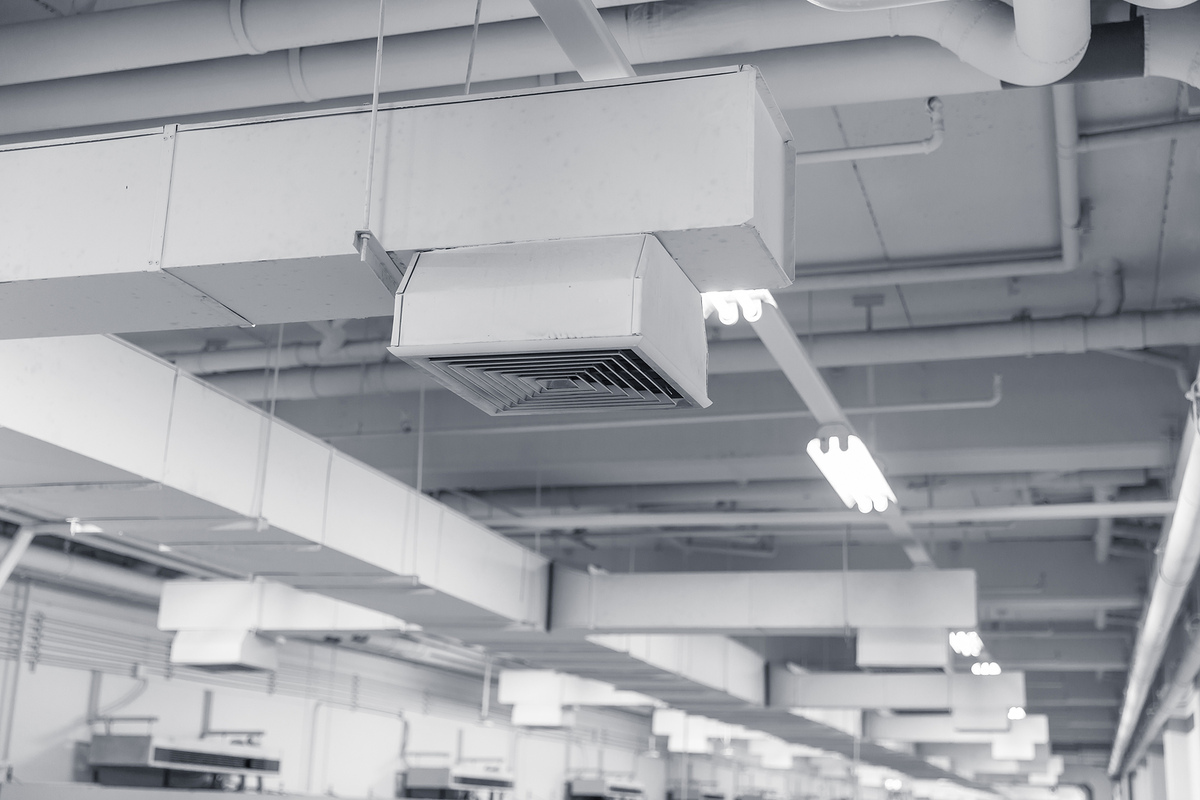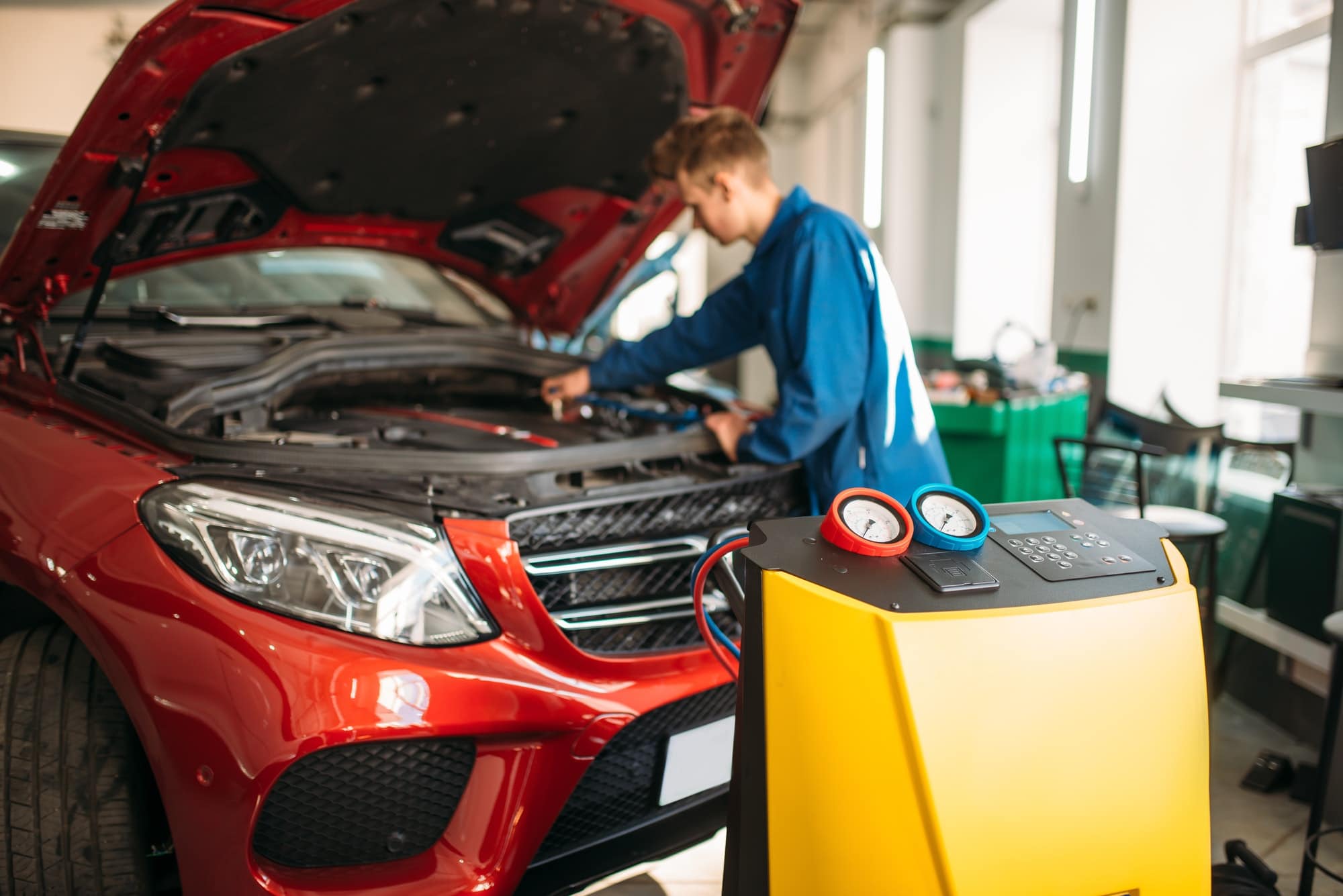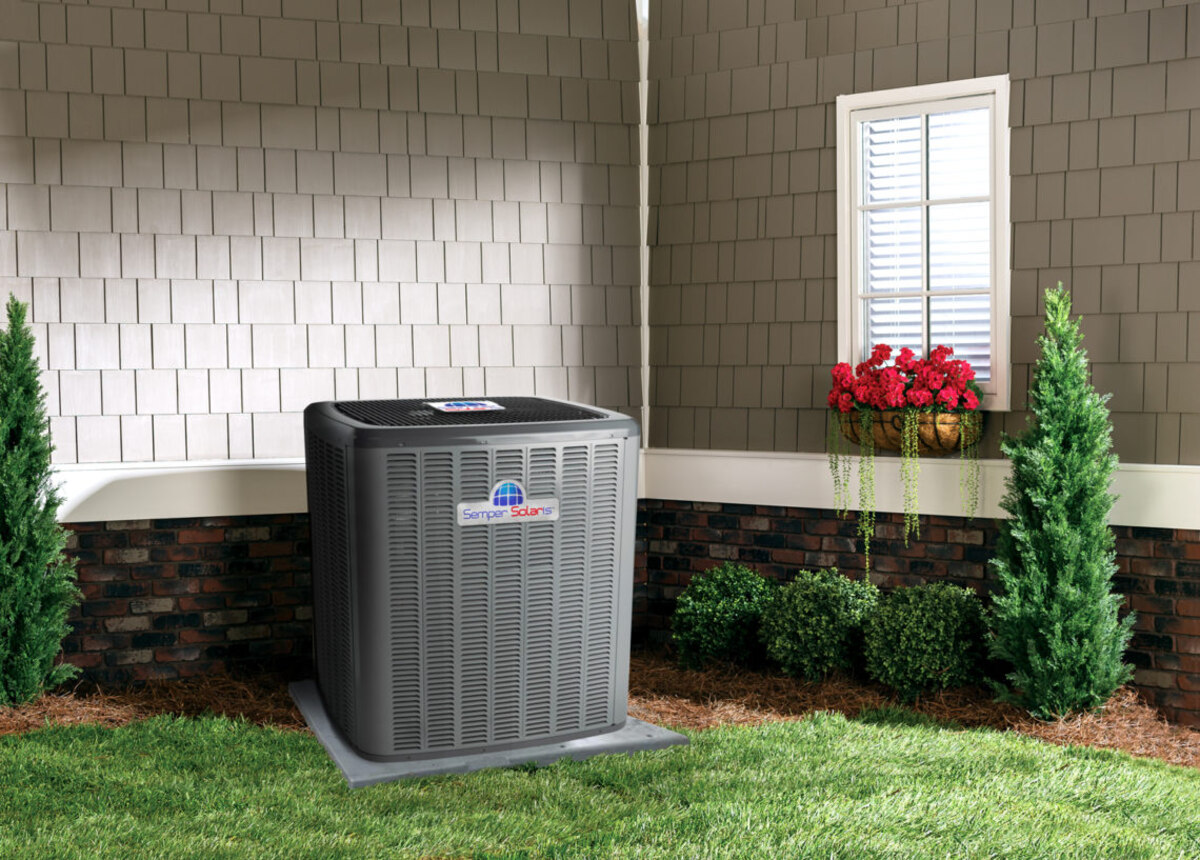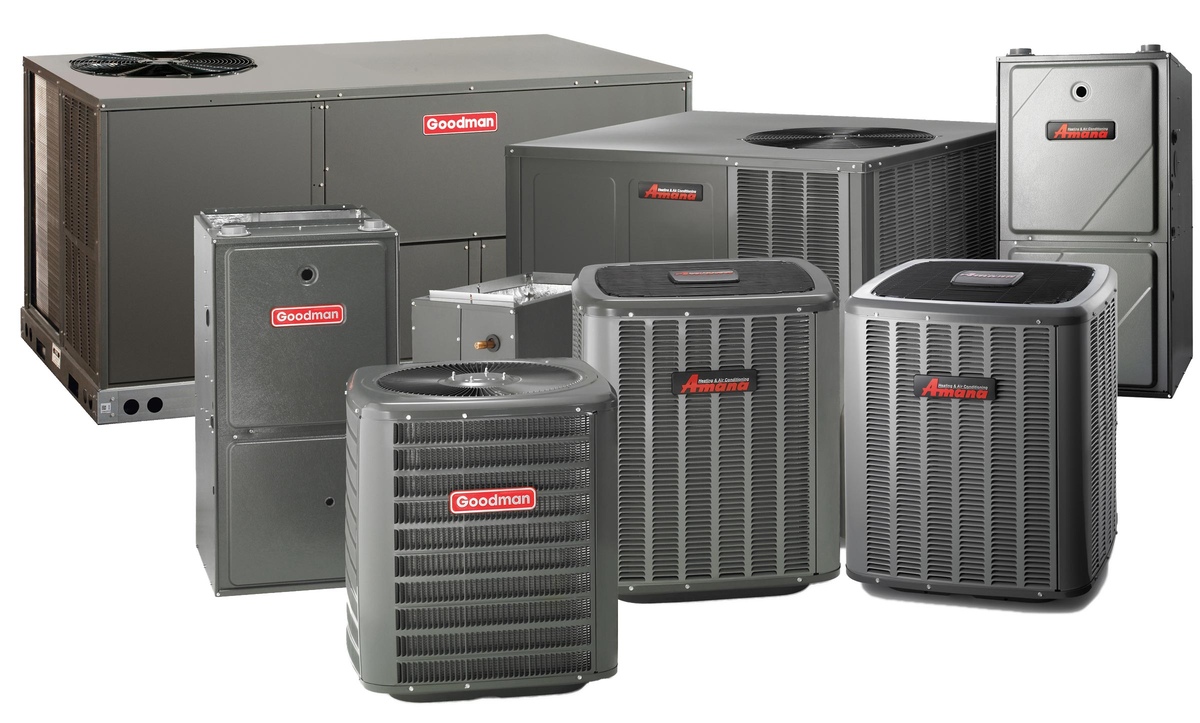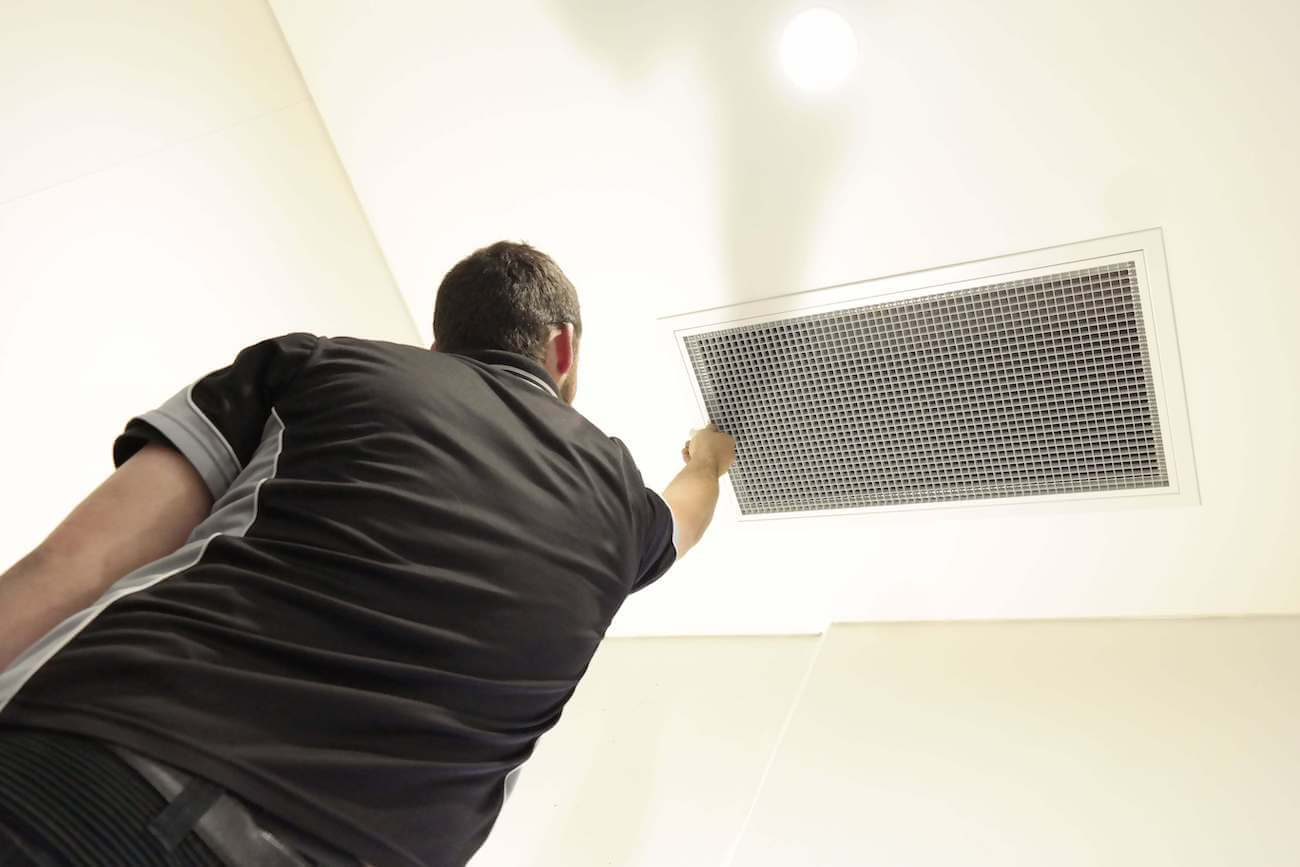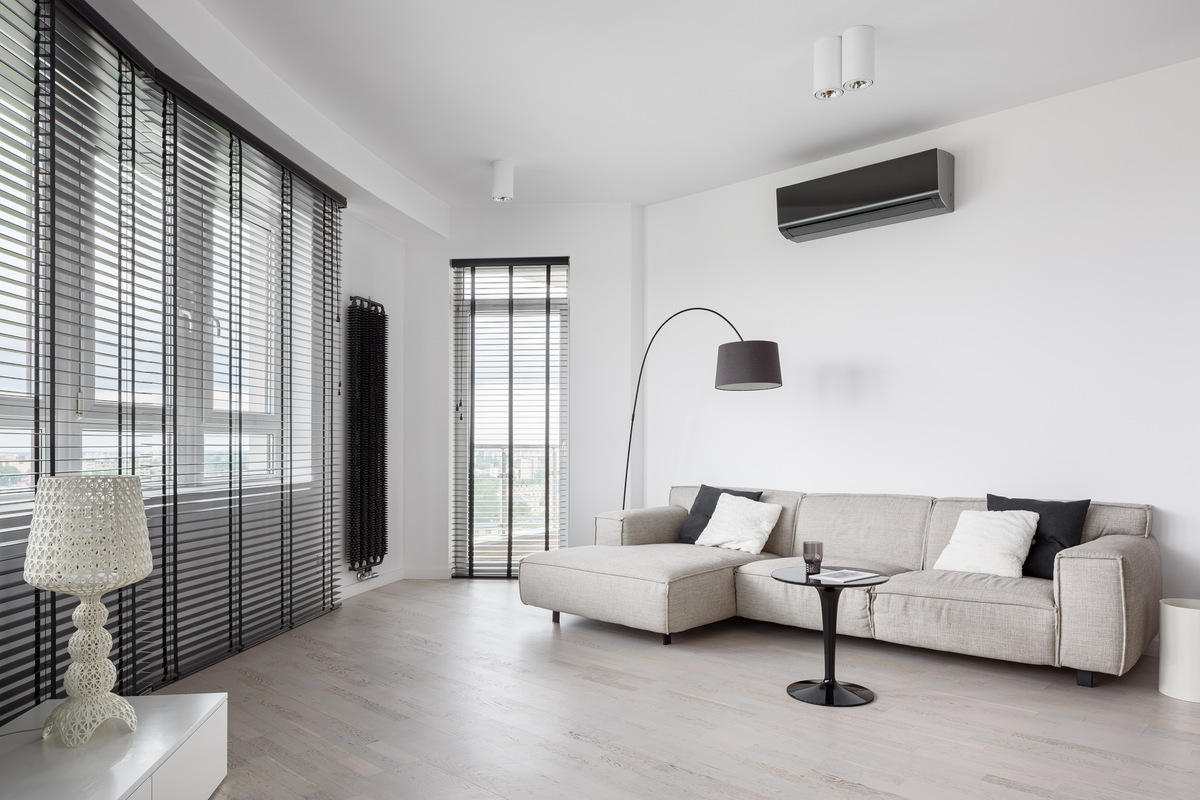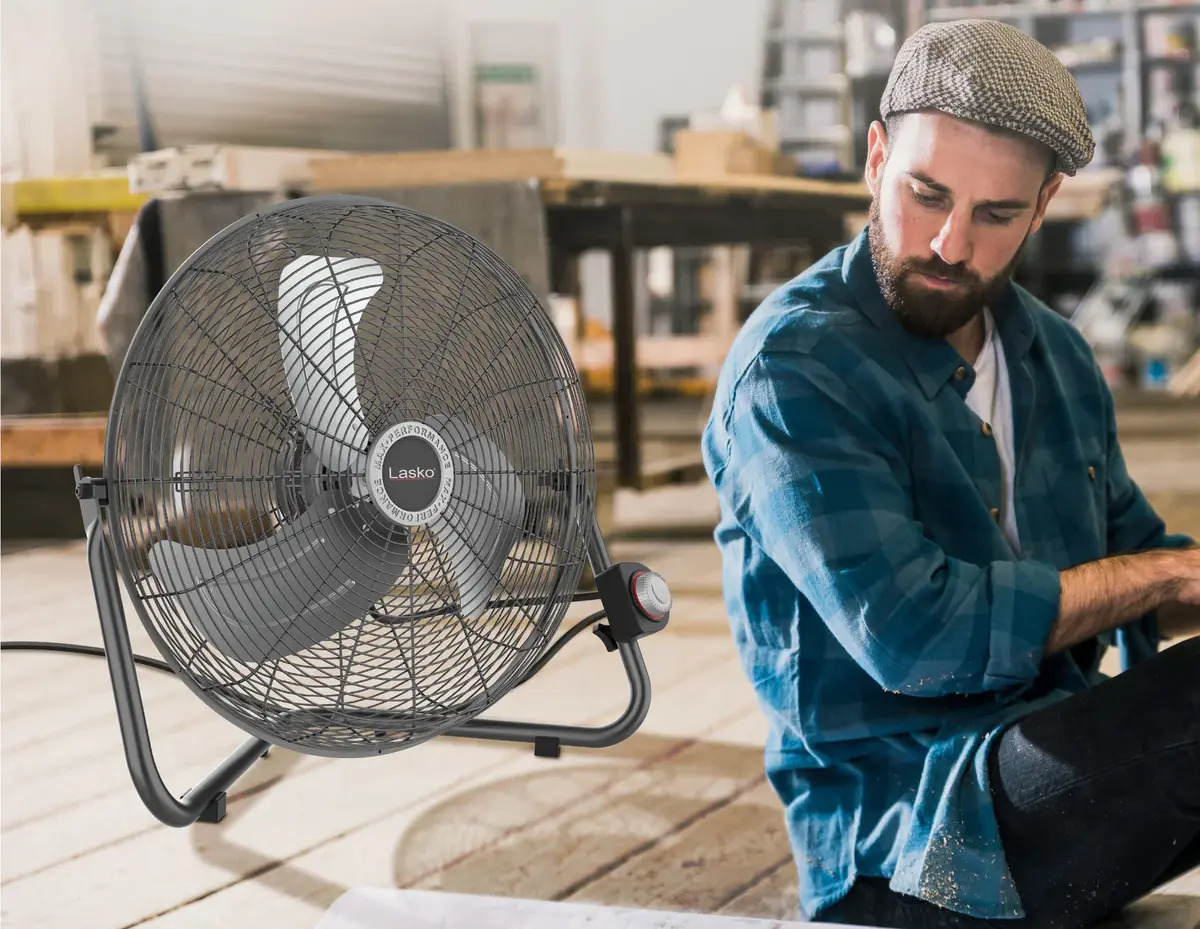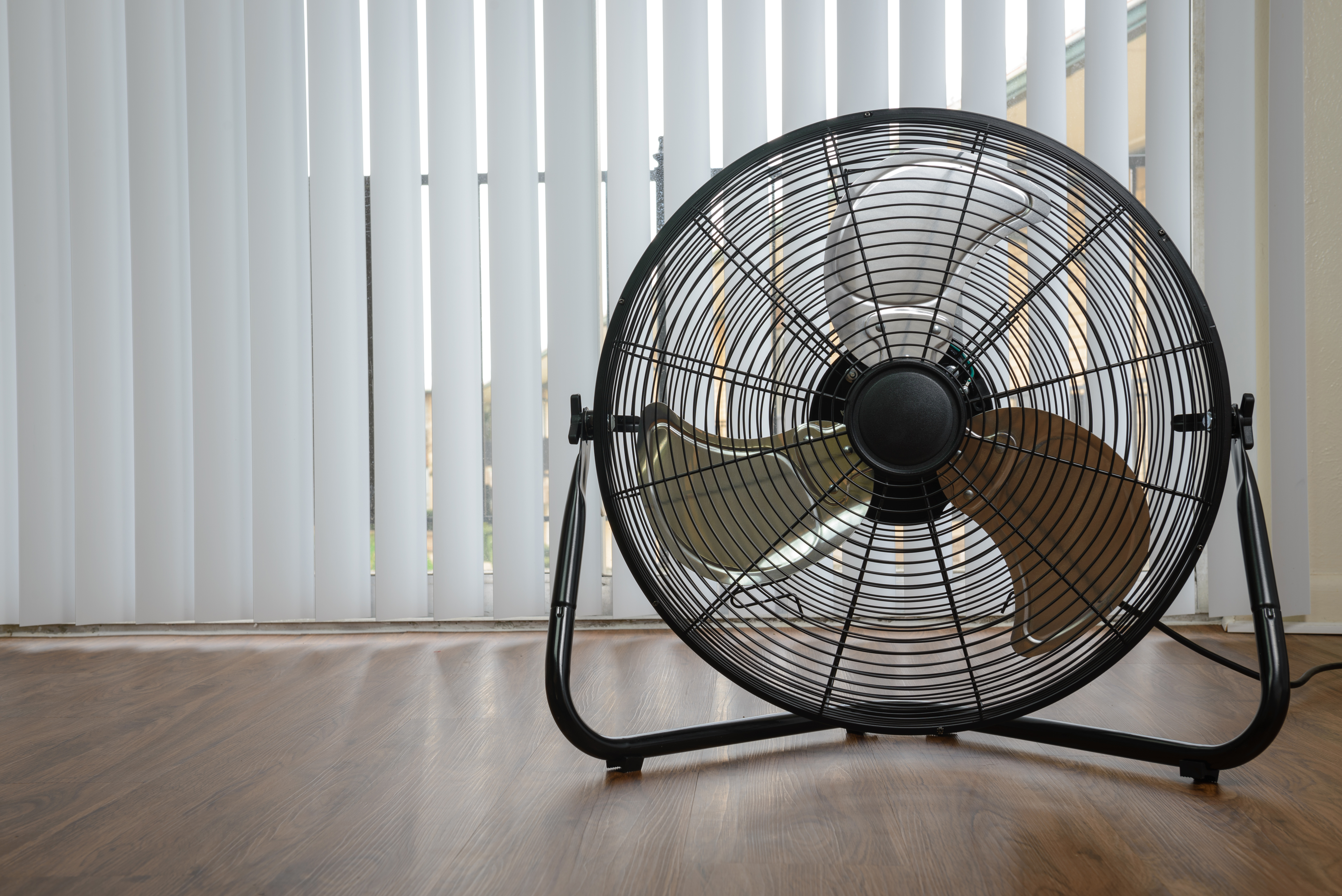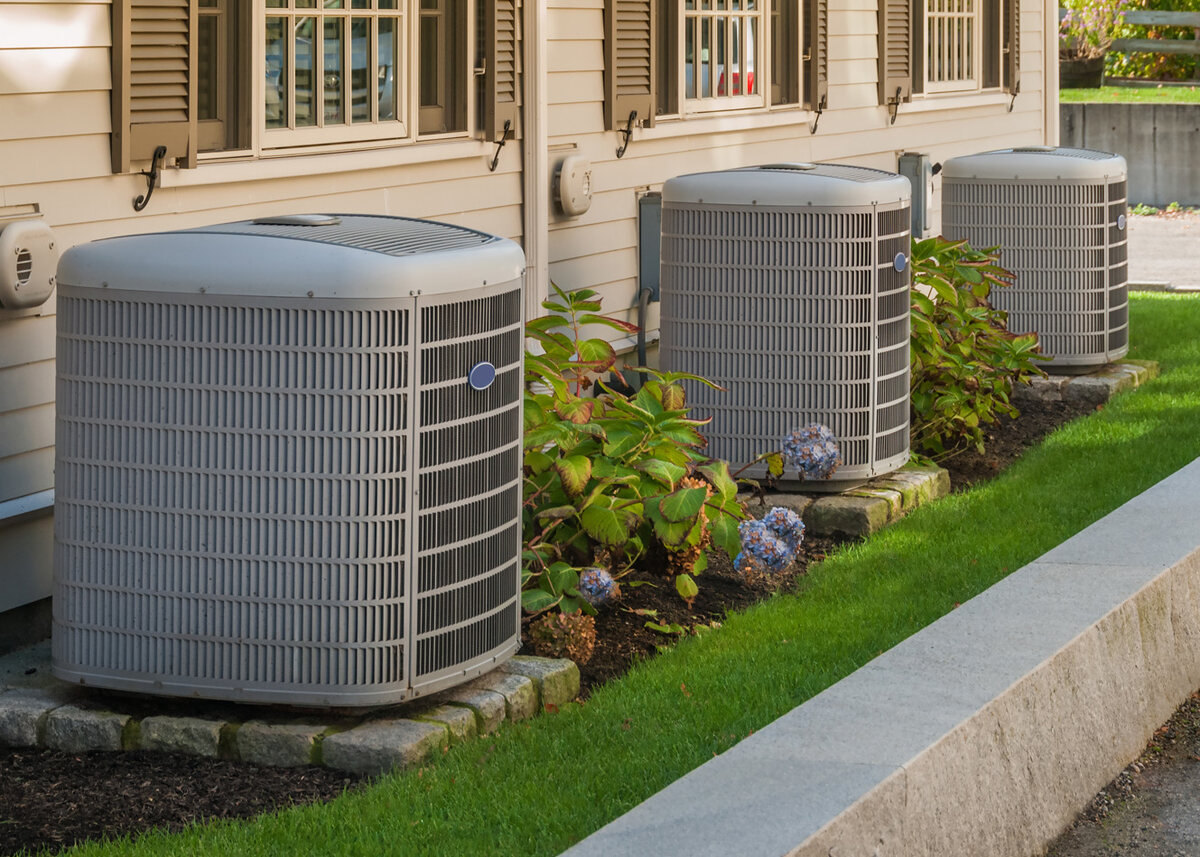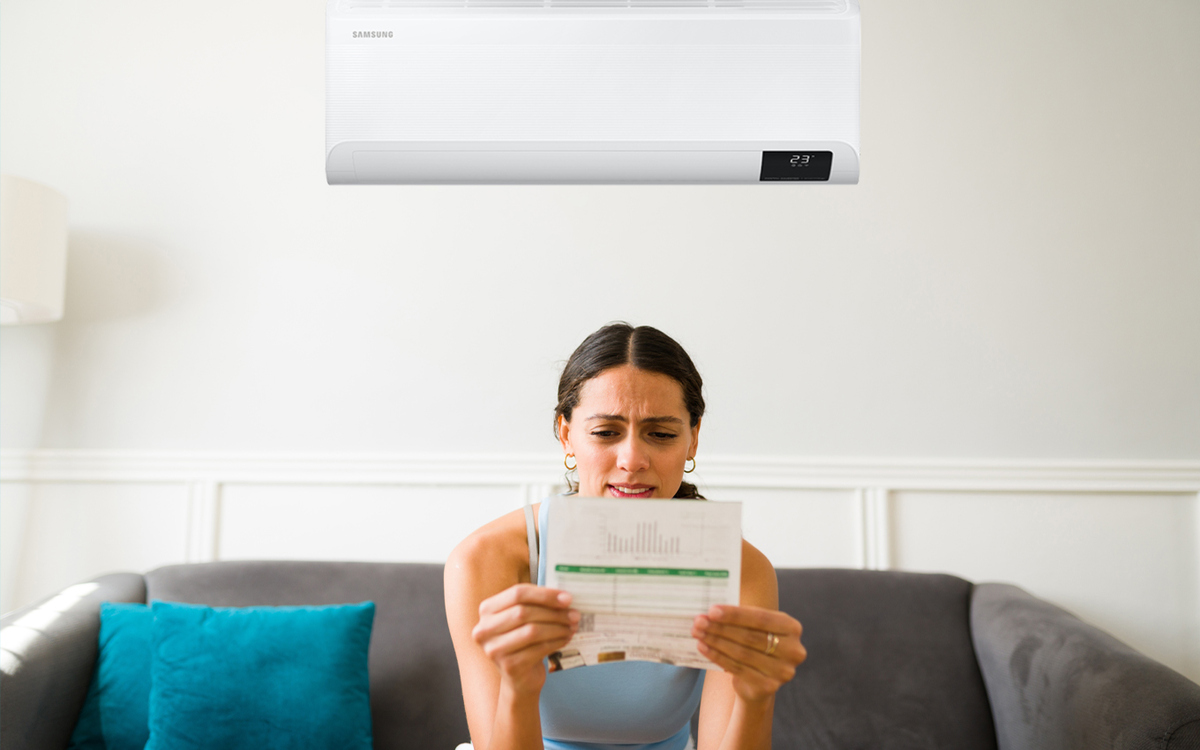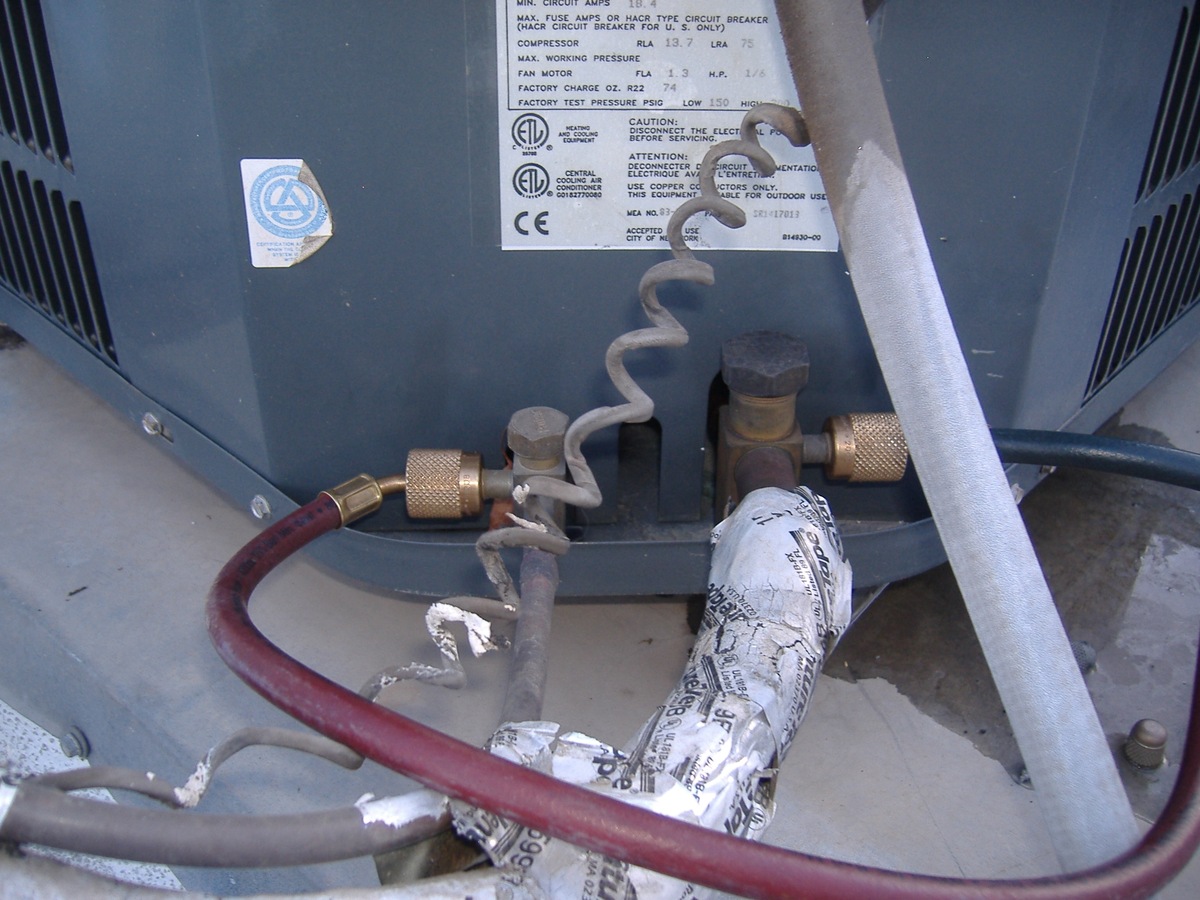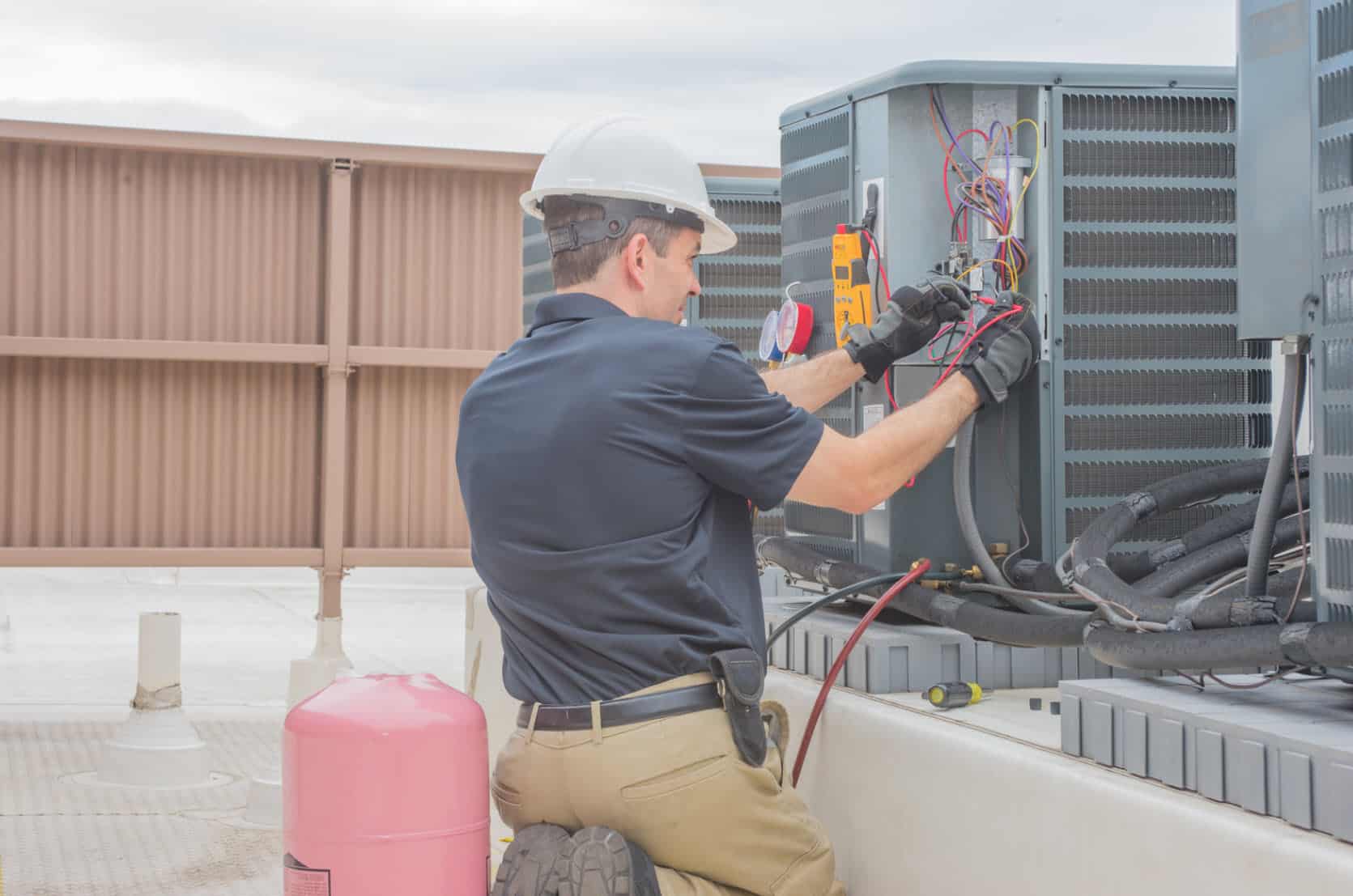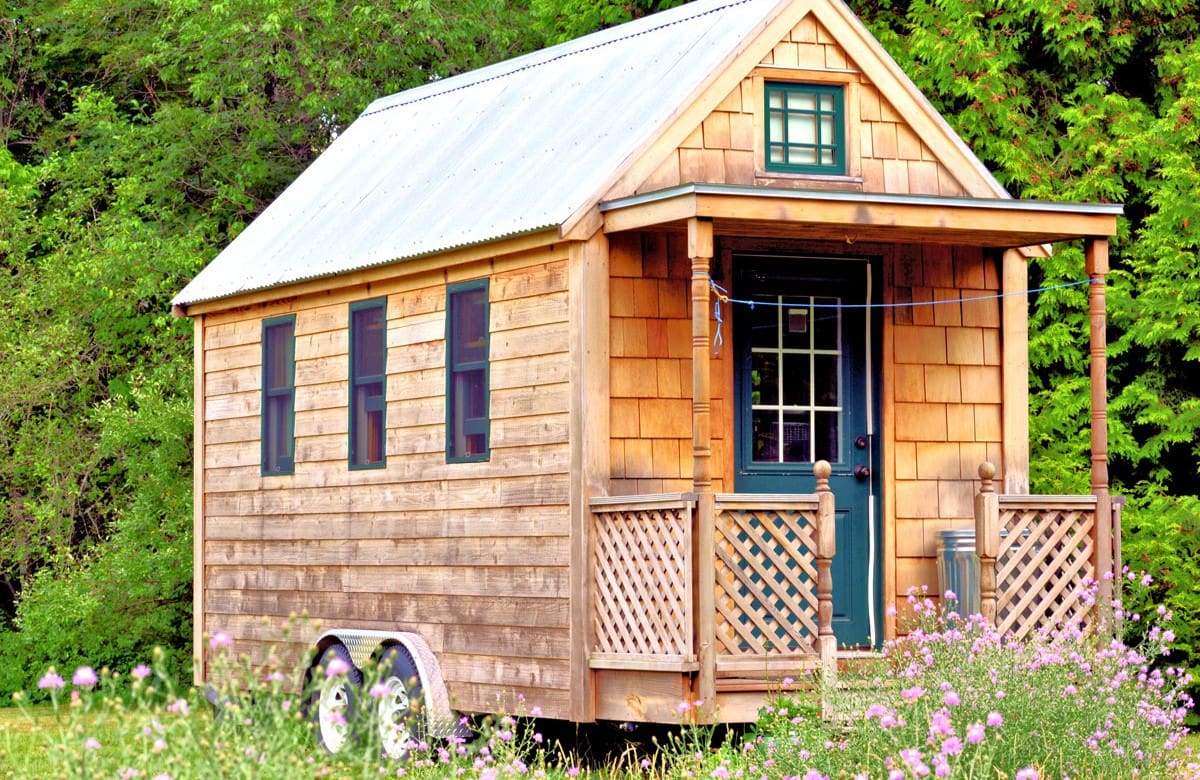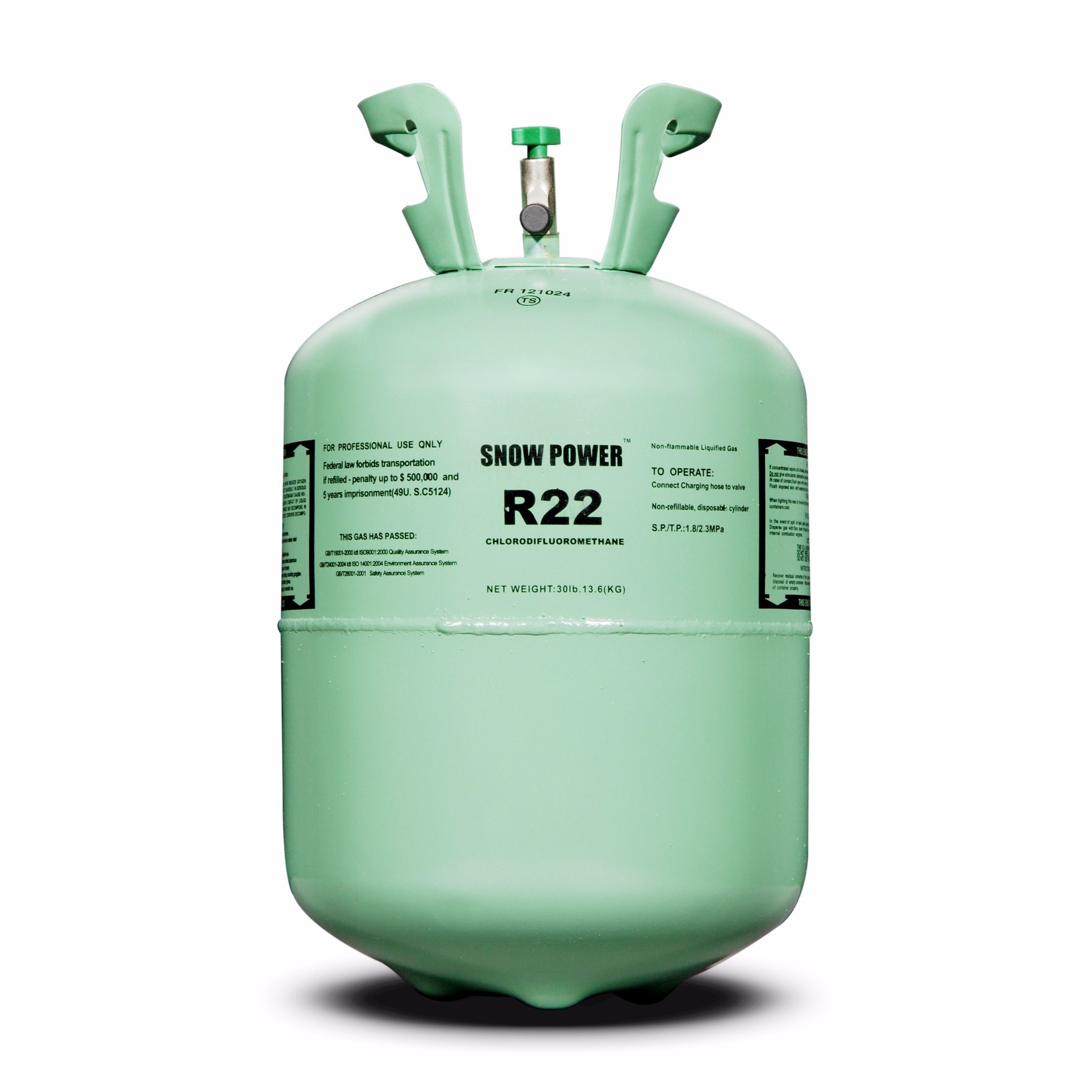Home>Home Maintenance>How Much Is High-Velocity Air Conditioning
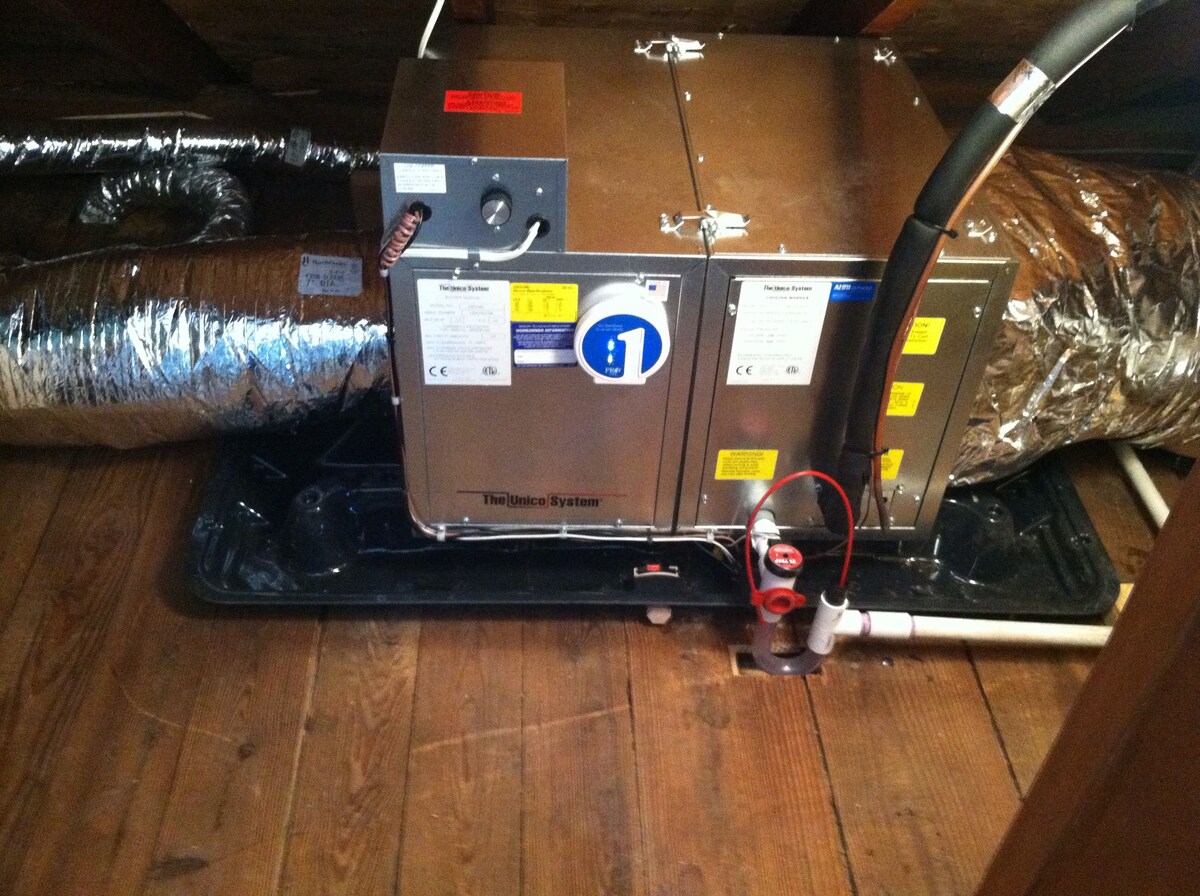

Home Maintenance
How Much Is High-Velocity Air Conditioning
Modified: August 27, 2024
Find out the cost of high-velocity air conditioning for your home and learn about its benefits. Expert tips and guidance on home maintenance.
(Many of the links in this article redirect to a specific reviewed product. Your purchase of these products through affiliate links helps to generate commission for Storables.com, at no extra cost. Learn more)
Introduction
When it comes to maintaining a comfortable home, having a reliable and efficient air conditioning system is essential. In recent years, high-velocity air conditioning systems have gained popularity for their ability to provide consistent cooling throughout the entire house. However, many homeowners wonder about the cost implications of installing and operating such a system.
In this article, we will delve into the world of high-velocity air conditioning and explore the factors that determine its cost. From installation expenses to ongoing operating costs, we will break down the various elements that contribute to the overall investment. By understanding these factors, homeowners can make informed decisions about whether high-velocity air conditioning is the right choice for their homes and budgets.
Key Takeaways:
- High-velocity air conditioning systems offer efficient and consistent cooling throughout homes, but their initial cost is higher than traditional systems. However, their long-term benefits and energy savings make them a compelling option for homeowners.
- Factors such as house size, existing infrastructure, efficiency ratings, installation complexity, and local labor and material costs all contribute to the overall cost of high-velocity air conditioning systems. It’s important to obtain multiple quotes from reputable contractors to get an accurate estimate for your specific needs.
Read also: 9 Amazing High Velocity Dryer For 2025
Definition of High-Velocity Air Conditioning
High-velocity air conditioning, also known as a small duct, high-velocity (SDHV) system, is a type of HVAC system that uses smaller and more flexible ductwork compared to traditional systems. These systems are designed to deliver conditioned air at a higher velocity, allowing for improved airflow and efficient cooling throughout the entire house.
The key component of a high-velocity air conditioning system is the air handler, which is responsible for conditioning the air and pushing it through the ductwork. The air handler utilizes a powerful fan that circulates the air at a higher speed, achieving uniform cooling and eliminating hot or cold spots.
Unlike traditional systems that require large ductwork, high-velocity systems use smaller, 2-inch flexible ducts that can be easily threaded through existing walls and ceilings. This makes them an ideal option for retrofitting older homes without major renovations. The small size of the ductwork also allows for more flexibility in design, making it possible to install the system in areas where traditional ductwork cannot reach.
In addition to cooling, high-velocity air conditioning systems can also provide heating by incorporating a heat pump or a furnace into the system. This versatility makes them a suitable option for year-round comfort in various climates.
Factors that Determine the Cost of High-Velocity Air Conditioning
The cost of installing and operating a high-velocity air conditioning system can vary depending on several factors. Understanding these factors can help homeowners estimate the overall investment required. Here are the key factors that influence the cost of high-velocity air conditioning:
- House Size: The size of the house plays a significant role in determining the cost of the system. Larger homes require more ductwork and may need additional air handlers, which can increase both the installation and equipment costs.
- Existing Infrastructure: If your home is already equipped with a traditional HVAC system, the cost of retrofitting it with a high-velocity system may be higher. Additional modifications may be required for installation, such as creating space for ductwork or upgrading electrical connections.
- Efficiency and Features: High-velocity air conditioning systems come in various efficiency ratings, with higher-rated systems offering better energy savings. Additionally, systems with advanced features like zoning capabilities or variable speed controls can come at a higher price point.
- Installation Complexity: The complexity of the installation can also impact the cost. If your home has limited access to certain areas or requires structural modifications, the installation process may be more involved and expensive.
- Local Labor and Material Costs: The cost of labor and materials in your area can also affect the overall investment. It is always a good idea to obtain quotes from multiple contractors and compare prices to ensure you are getting a fair deal.
While these factors can contribute to the overall cost, it is important to remember that high-velocity air conditioning systems are generally more expensive than traditional systems due to their unique specifications and installation requirements. However, the long-term benefits and energy savings they offer can offset the initial investment over time.
Installation Costs of High-Velocity Air Conditioning Systems
The installation costs of high-velocity air conditioning systems can vary depending on several factors. It is essential to budget for both the equipment and the labor involved in the installation process. Here are the key components that contribute to the overall installation costs:
- Equipment: The cost of the high-velocity air conditioning equipment itself is a significant part of the installation expenses. This includes the air handler, condenser unit, ductwork, and any additional components required for the system.
- Ductwork Installation: The installation of the ductwork is a crucial aspect of the process. It involves running the smaller, flexible ducts through walls, ceilings, and other areas of the house. The complexity of the ductwork installation, including any required modifications or access challenges, can impact the cost.
- Electrical and Plumbing Work: Depending on your home’s existing infrastructure and the requirements of the high-velocity system, there may be a need for electrical and plumbing work. This can include wiring for the air handler, connection to the power source, and plumbing for condensate drainage.
- Permits and Inspections: Obtaining the necessary permits and scheduling inspections adds to the installation costs. These requirements ensure that the system complies with local building codes and regulations.
- Contractor Fees: Hiring a professional contractor to install the high-velocity air conditioning system is recommended. The contractor’s fees will vary depending on their experience, reputation, and the complexity of the installation.
It is important to note that the installation costs can vary significantly depending on the size of the house, the complexity of the installation, and the region in which you live. It is advisable to gather multiple quotes from reputable contractors to get an accurate estimate for your specific installation needs.
Additionally, investing in professional installation ensures that the system is set up correctly, maximizing its efficiency and performance. DIY installations may result in suboptimal performance and potential damage to the system, leading to costly repairs in the future.
Operating Costs of High-Velocity Air Conditioning Systems
When considering the cost of high-velocity air conditioning systems, it’s important to take into account the ongoing operating costs. While these systems are known for their efficiency and energy savings, there are still certain expenses to consider. Here are the key factors that contribute to the operating costs of high-velocity air conditioning systems:
- Energy Consumption: The primary operating cost of any air conditioning system is the energy consumption. High-velocity systems are designed to be more efficient than traditional systems, utilizing smaller ducts and higher air velocity. However, the energy consumption will still depend on factors such as the size of the space being cooled and the efficiency rating of the system.
- Maintenance and Repairs: Regular maintenance is essential to keep high-velocity air conditioning systems in optimal condition. This includes cleaning or replacing air filters, inspecting and maintaining the air handler, and checking the ductwork for any leaks or obstructions. While routine maintenance helps prevent major issues, occasional repairs may be necessary, adding to the operating costs.
- Thermostat Settings and Usage: The thermostat settings and usage pattern also affect the operating costs. Setting the thermostat at an energy-efficient temperature and using programmable or smart thermostats to regulate cooling can help reduce energy consumption and costs.
- Climatic Conditions: The climate in which your home is located can impact the operating costs. Warmer climates and extreme temperature fluctuations may require the system to work harder and consume more energy to maintain desired indoor comfort.
- Electricity Rates: The cost per kilowatt-hour (kWh) of electricity in your area will also influence the operating expenses. It’s important to check your local utility rates and factor them into your calculations.
Overall, the operating costs of high-velocity air conditioning systems tend to be lower compared to traditional systems due to their enhanced efficiency. However, it is important to consider these ongoing expenses when budgeting for the system and weigh them against the long-term energy savings and comfort benefits that high-velocity systems offer.
Regular maintenance and energy-saving habits can further optimize the performance and reduce operating costs. Consulting a professional HVAC technician can help you understand the specific operating costs associated with your high-velocity air conditioning system and provide guidance on maximizing efficiency.
High-velocity air conditioning systems are more expensive than traditional systems, but they provide better air circulation and can be more energy efficient in the long run.
Benefits of High-Velocity Air Conditioning Systems
High-velocity air conditioning systems offer numerous benefits that make them an attractive option for homeowners. From improved comfort to energy efficiency, these systems provide several advantages over traditional HVAC systems. Here are the key benefits of high-velocity air conditioning systems:
- Consistent Cooling: High-velocity systems deliver fast and consistent cooling throughout the entire house. The high-velocity airflow ensures that every corner of the room receives the desired temperature, eliminating hot or cold spots.
- Flexible Installation: The small size of the ductwork makes high-velocity systems ideal for retrofitting older homes. These systems can be installed in areas where traditional ductwork cannot reach, providing greater flexibility in design and reducing the need for major renovations.
- Improved Indoor Air Quality: High-velocity systems offer better air filtration and circulation, resulting in improved indoor air quality. They remove dust, allergens, and other pollutants from the air, providing a healthier living environment.
- Energy Efficiency: Despite their high-velocity air delivery, these systems are designed to be energy-efficient. The smaller ductwork minimizes energy loss, and many high-velocity systems use advanced technologies to optimize energy consumption, reducing utility bills.
- Zoning Capabilities: High-velocity systems often come with zoning capabilities, allowing you to divide your home into different zones with individual temperature controls. This not only improves comfort but also helps save energy by cooling only the occupied areas.
- Quieter Operation: High-velocity systems are known for their quieter operation compared to traditional HVAC systems. The smaller, more efficient air handlers result in reduced noise levels, enhancing the overall comfort and tranquility of your home.
- Space Savings: The smaller ductwork required by high-velocity systems frees up valuable space in your home. This means that you can use the saved space for storage or other purposes.
These benefits make high-velocity air conditioning systems an excellent choice for homeowners looking for efficient and effective cooling solutions. However, it’s important to consider the specific needs and characteristics of your home before making a decision. Consult with a professional HVAC technician to determine if a high-velocity system is the right fit for your home and to understand the potential benefits you can expect.
Drawbacks of High-Velocity Air Conditioning Systems
While high-velocity air conditioning systems offer numerous benefits, there are some drawbacks to consider before making a decision. Understanding these drawbacks can help homeowners make an informed choice about whether a high-velocity system is suitable for their needs. Here are the key drawbacks of high-velocity air conditioning systems:
- Higher Initial Cost: High-velocity systems tend to have a higher initial cost compared to traditional HVAC systems. The specialized equipment, smaller ductwork, and installation requirements contribute to this increased cost. However, it’s important to weigh this against the long-term benefits and energy savings that the system can provide.
- Potential Noise Issues: While high-velocity systems are generally quieter than traditional systems, there can still be noise issues if the system is not properly installed or the air handler is located near living spaces. It’s crucial to work with a professional contractor to ensure proper placement and sound insulation measures are taken.
- Maintenance Complexity: The unique design and smaller components of high-velocity systems may require specialized knowledge and expertise for maintenance and repairs. It’s important to work with qualified technicians familiar with these systems to ensure proper maintenance and avoid any potential issues.
- Limitations on Airflow: Due to the higher velocity of the air, high-velocity systems may have limitations on airflow. This means that they may not be the ideal choice for homes with specific requirements, such as large open spaces or rooms with high ceilings that require a greater volume of air.
- Compatibility Issues: High-velocity systems may not be compatible with certain existing infrastructure or ductwork. Retrofitting an older home or integrating the high-velocity system with an existing HVAC system may require additional modifications and expenses.
- Dependency on Skilled Installers: The installation of high-velocity air conditioning systems requires skilled and experienced professionals. It can be challenging to find contractors knowledgeable in high-velocity systems, which might limit your options or increase the installation cost.
It’s important to evaluate these drawbacks in the context of your specific needs and preferences. Consulting with HVAC professionals and considering the unique characteristics of your home can help you determine if a high-velocity air conditioning system is the right choice for you.
Comparison of High-Velocity Air Conditioning Costs with Conventional Systems
When considering the cost of high-velocity air conditioning systems, it’s important to compare them with conventional systems to make an informed decision. Here is a comparison of the costs between high-velocity air conditioning and traditional HVAC systems:
Installation Costs: High-velocity air conditioning systems generally have a higher initial installation cost compared to conventional systems. The specialized equipment, smaller ductwork, and potential modifications required contribute to this higher cost. Conversely, conventional systems have larger ductwork, which can be less expensive to install, especially in new construction where space is not a concern.
Operating Costs: High-velocity systems are designed to be energy-efficient and can provide potential long-term energy savings. They utilize smaller ductwork and higher air velocity to deliver consistent cooling, reducing energy loss. On the other hand, conventional systems may have higher operating costs due to larger ductwork and potential energy losses associated with inefficient airflow.
Maintenance and Repairs: Both high-velocity and conventional systems require regular maintenance to ensure optimal performance. However, the smaller components and specialized design of high-velocity systems may result in slightly higher maintenance costs. Traditional systems, with their larger and more common components, may have lower maintenance costs. It’s important to consider the specific requirements and potential repair costs associated with each system.
Flexibility of Installation: High-velocity systems offer more flexibility in installation, especially in retrofitting older homes. The smaller, more flexible ductwork can be threaded through existing spaces, reducing the need for major renovations. Traditional systems, with their larger and more rigid ductwork, may require extensive modifications or compromise on efficiency when retrofitting older homes.
Long-Term Benefits: While high-velocity systems may have a higher initial cost, they offer numerous long-term benefits such as improved comfort, energy efficiency, and better air quality. These benefits can offset the initial investment over time. Conventional systems may have lower installation costs but may not provide the same level of comfort and energy savings as high-velocity systems.
In making a decision between high-velocity air conditioning and conventional systems, it’s crucial to consider the specific needs of your home, your budget, and your long-term goals. Consulting with HVAC professionals and comparing quotes from reputable contractors can help you evaluate the costs and benefits associated with each system and make an informed choice that suits your needs.
Conclusion
In conclusion, high-velocity air conditioning systems offer unique advantages and considerations for homeowners seeking efficient and consistent cooling throughout their homes. While these systems come with a higher initial cost compared to traditional HVAC systems, their benefits, such as improved comfort, energy efficiency, and flexibility of installation, make them a compelling option.
Factors such as house size, existing infrastructure, efficiency ratings, installation complexity, and local labor and material costs all contribute to the overall cost of high-velocity air conditioning systems. It’s important to obtain multiple quotes from reputable contractors to get an accurate estimate for your specific needs.
When evaluating the operating costs, high-velocity systems tend to be more energy efficient and offer better air quality compared to conventional systems. Regular maintenance ensures optimal performance, and energy-saving habits can further reduce operating costs.
While there are potential drawbacks to consider, such as higher initial costs, potential noise issues, and the need for specialized maintenance, these should be weighed against the long-term benefits that high-velocity systems provide.
Ultimately, the decision to install a high-velocity air conditioning system should be based on careful consideration of your home’s needs, budget, and long-term goals. Consulting with HVAC professionals can provide valuable insights and help you make an informed choice.
By understanding the costs and benefits associated with high-velocity air conditioning systems, homeowners can make an educated decision and enjoy the benefits of efficient and comfortable cooling in their homes for years to come.
Frequently Asked Questions about How Much Is High-Velocity Air Conditioning
Was this page helpful?
At Storables.com, we guarantee accurate and reliable information. Our content, validated by Expert Board Contributors, is crafted following stringent Editorial Policies. We're committed to providing you with well-researched, expert-backed insights for all your informational needs.
